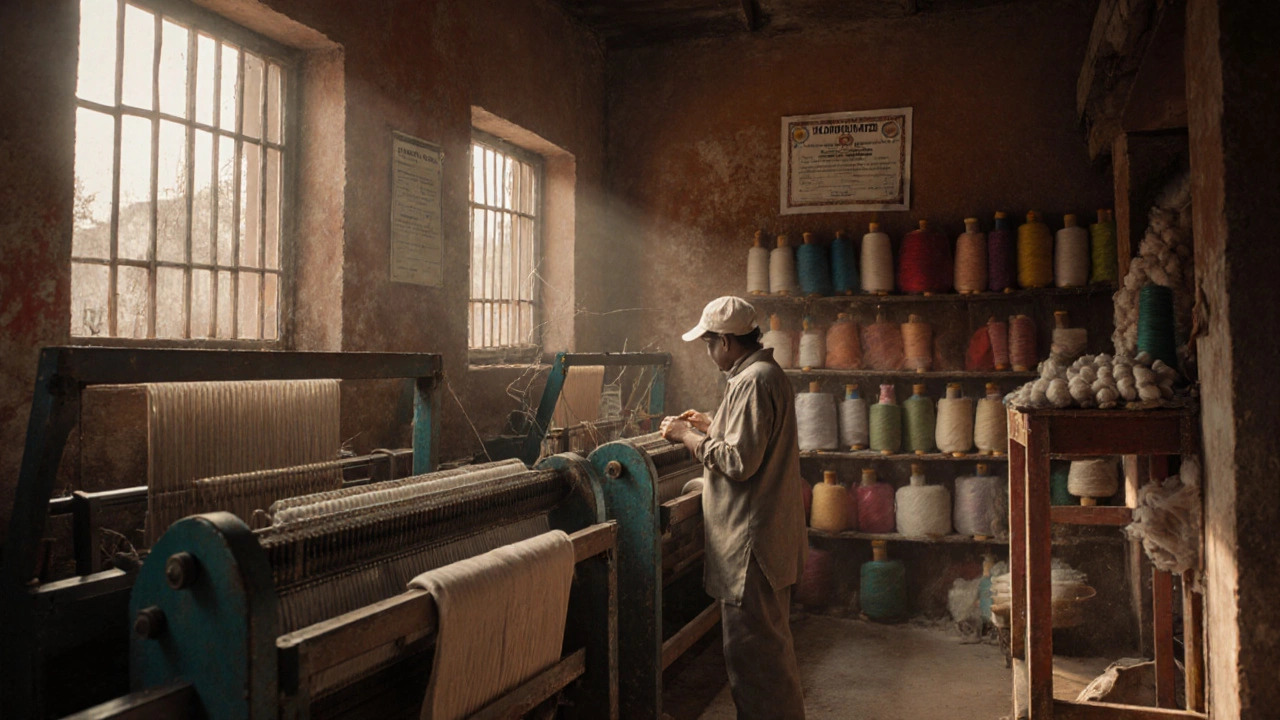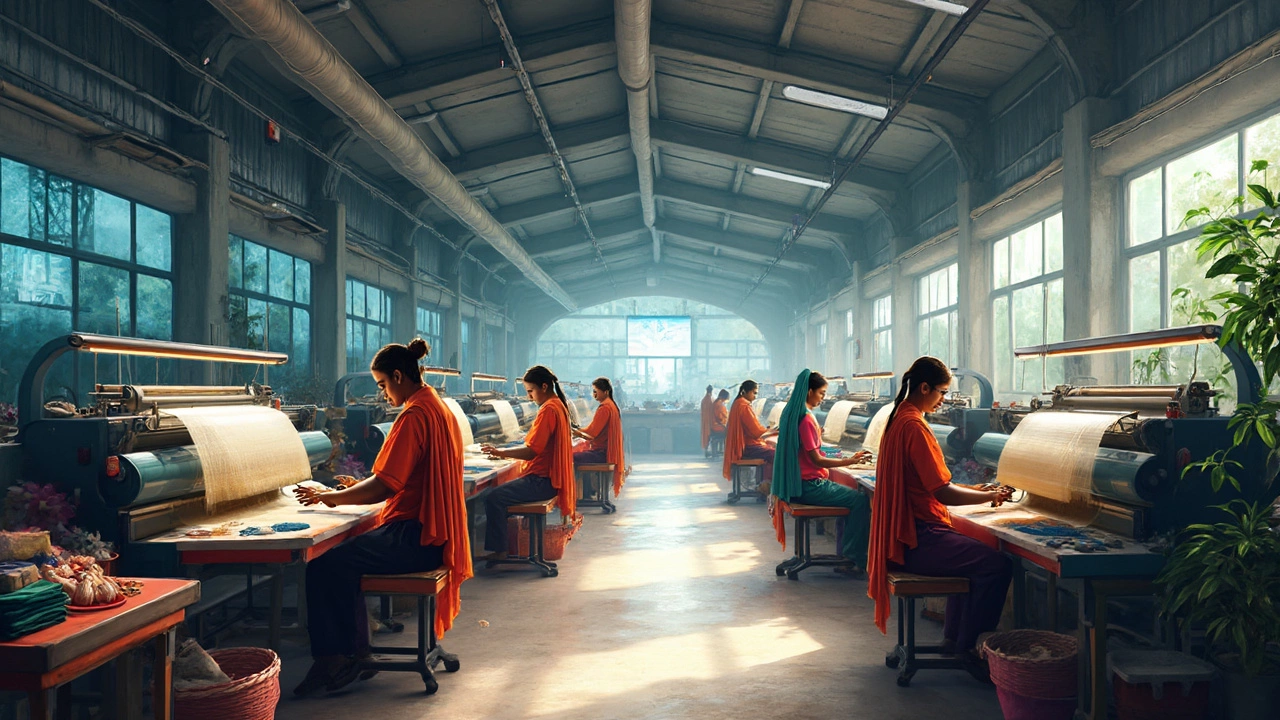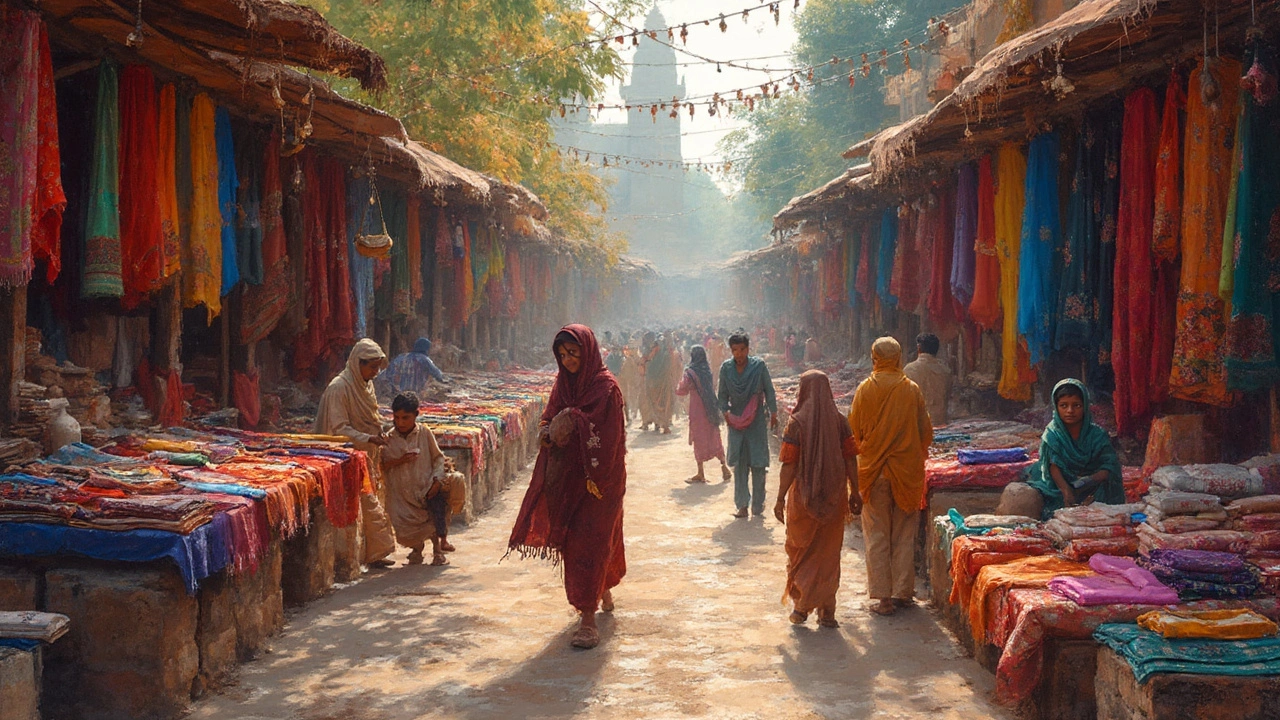Textile Industry India: What’s Driving Growth and How to Get Involved
India’s textile sector is one of the biggest makers of fabrics in the world. It feeds the local clothing market, supplies export buyers and creates millions of jobs. If you’re thinking about starting a factory, buying a brand or investing in a supply chain, you need to know what makes this industry tick.
Key Regions and Products
Most of the production happens in Gujarat, Tamil Nadu, Maharashtra and West Bengal. Gujarat is famous for cotton yarn and denim, while Tamil Nadu leads in knitwear and synthetic fabrics. Maharashtra’s Pune area has a strong silk and hand‑loom community, and West Bengal is known for fine muslin and dhotis.
Different fabrics dominate each region because of raw material access and skilled labor. Cotton grows best in Gujarat and Maharashtra, so you’ll find cheaper yarn there. Synthetic fibers are produced near major petrochemical hubs, keeping costs low for polyester and nylon.
Export numbers show that ready‑made garments, home textiles and technical fabrics are the top earners. Buyers from the US, EU and the Middle East look for competitive pricing and quick turn‑around, which Indian factories can deliver when they’re set up right.
Challenges and Opportunities
Power cuts and water shortages still bite smaller units. Many factories rely on diesel generators, adding to operating costs. However, the government’s “Textile Ministry” schemes are easing credit, offering subsidies for modern looms and encouraging green energy use.
Labor quality is a double‑edged sword. The country has a huge workforce, but training gaps affect productivity. Investing in skill‑up programs or partnering with technical schools can boost efficiency and reduce errors.
Sustainability is becoming a selling point. Brands overseas want eco‑friendly fabrics, so adopting organic cotton, low‑water dyeing and recycling waste can open new market doors. Some Indian parks already have zero‑liquid‑discharge plants, and they’re attracting premium orders.
When you calculate startup costs, factor in land (often cheaper in tier‑2 cities), machinery (modern looms cost between $30,000‑$100,000 each), and compliance fees. A typical mid‑size garment unit may need $1‑$2 million to become fully operational. Funding is easier now because several banks have special textile loan lines with lower interest rates.Overall, the textile industry in India blends traditional craft with modern tech. By choosing the right location, tapping government incentives and focusing on quality and sustainability, you can build a business that competes globally and grows with the market.

How to Start a Textile Business in India: Step-by-Step Guide for 2025
Learn how to start a textile business in India in 2025 with step-by-step guidance on registration, machinery, government schemes, sourcing, and export. Avoid common mistakes and build a profitable small-scale unit.

Textile Industry Outlook 2024: What's Really Shaping Indian Textile Manufacturers?
India's textile industry in 2024 is running at a different pace with global trends shaking things up. Domestic demand is ticking up, and export numbers are shifting, but labor, costs, and new technology are changing the game for manufacturers. Sustainability isn't just a buzzword—buyers are demanding proof. This article lays out the raw facts, industry shifts, and tips for textile manufacturers in India looking to stay ahead. Get a fresh look at what's actually driving the future of Indian textiles.

Textile Industry in India: Current Trends and Insights
The textile industry in India is a vibrant and dynamic sector that plays a crucial role in the nation's economy. It is characterized by its wide range of products, innovative textile technologies, and significant contribution to employment and exports. Recent trends show a shift towards sustainable and eco-friendly practices, making it essential for manufacturers to adapt and capitalize on these changes. The industry's resilience and adaptability continue to drive its growth and global competitiveness.


